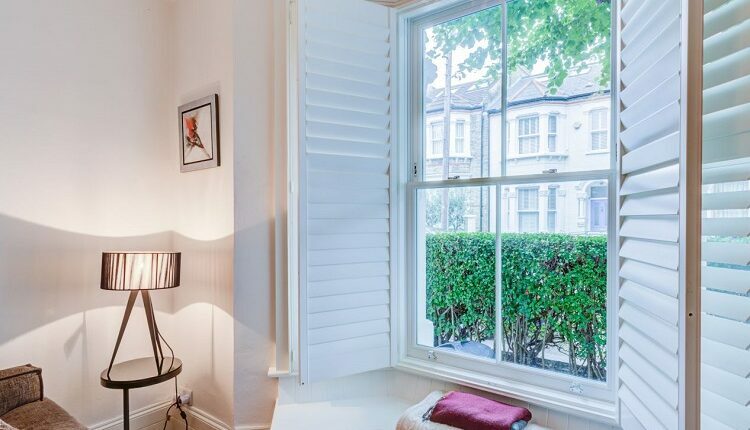Reducing condensation on windows
At different times of the year and in different environments, a specific amount of condensation is inevitable and harmless. However, excessive condensation, if not properly managed and eliminated, can lead to multiple problems.
A large amount of condensation that accumulates permanently or over a long period can affect the well-being of both the property and the occupant. Window supports can rot and masonry windows can need repairing; dampness can accumulate and be transferred to masonry or surrounding structures; colors can become damaged and mold can form. It is precisely these molds, along with more cool and uncomfortable living conditions, lead to negative results for the well-being of the resident, especially to the problems with breathing.
What causes the joint condensation problem?
Air has water vapor. The more it has, the higher its degree of moisture. If we compare warm air with cool air, we know that warm air has significantly more moisture in the form of water vapor.
Thus, this means that more warm air with the highest level of humidity can hold more water than more cool air would have the ability to hold. When this more warm air is made colder – for example, when it meets the surface of a frosty window – it must “let go” a fraction of its moisture. In the family criteria, it is condensation, which we often see.
We see examples of this every day. Steam from a boiling pot of water will become quite hot and has the possibility of having 100% humidity. It will take quite some time before it comes into contact with more cool air and cold surfaces. Just like in the bathroom hot steam from a good bathtub quickly fills the room and condenses on tiles, mirrors, and in any other space, which lowers the temperature of the air and its degree of water retention (also known as “dew bar”).
Our other post deals with a particular inconvenience condensation forming between the panes of insulating glass, why this happens, and what we can arrange to solve this problem. But what about everyday condensation?
What can we do to effectively manage condensation and maintain healthy living conditions?
Condensation around the house: contributing factors
There are a large number of moments of condensation and just as many different techniques to respond. The architecture and construction of your home will contribute to this – for example, how well “breathes” planes of the property? How well or poorly insulated walls? Perfectly ventilated? What is the picture of the building and how much sunlight and “solar benefit” it receives? And so on…
For example, the same method of application of quality will have a large impact on condensation. For example, does it work in a busy office building? – In an intensive office in the direction of 8 hours a day a person has the opportunity to breathe in an office building up to 720 ml of water (according to the Institute of Surveyors and Engineers). Is it not uncommon for a tenant to dry laundry inside? Is it a busy household with lots of cooking and infrequent showers?
Whatever your type of life, it is fundamental to perceive how to keep the circumstances of life awake and pleasant.
Table of Contents
Condensation Management
Recommendations have all chances to be different, and ultimately the best advice will suit any context. There are a large number of all sorts of technological solutions that have a chance to help, such as dehumidifiers. However, but these interventions have all chances to be useful, they are often focused on the signs (ie, excessive condensation) and not the causes (ie, why do you have excessive condensation in the first place?).
Here we’ll look at the latter – how to remove the root causes of condensation.
Reduce Excessive Humidity
The key task is to lower the degree of excess humidity. Hot condensation points, these as kitchens and bathrooms, often benefit from mechanical/additional extraction measures such as exhaust fans. In other spaces, heat and weightless flow/natural ventilation play a weighty role.
Temperature control
As we know, condensation happens because of a combination of moisture, temperature, and temperature changes. Controlling these is a good way to control condensation. Keeping the temperature of the environment around and increasing the temperature of the surfaces can help. But it is also important to reduce costs for heating and energy consumption. In this case, high-quality sash windows double glazing makes the inside windows warmer and less exposed to heat thanks to its remarkable thermal and insulating properties.
Controlled ventilation
Effective ventilation also allows you more efficient control of weightless flow and redistributes warm or cool air throughout the interior. By moving wet air and reducing accumulation in areas prone to condensation, you can reduce the formation of condensation. Windows that work great and have all the chances of just not being closed and covered, along with effective draught-proofing to suspend unintentional airflow, will certainly help you steer and maintain comfortable living circumstances.
Conclusion
By studying and experimenting with a narrow balance between heating and freezing combined with the natural weightless flow, a little understanding of ‘condensation’, and professional upgrades like upgrading the glazing on your windows, you can keep your living circumstances and the well-being of the property and its inhabitants under control.

